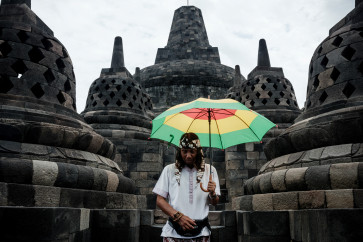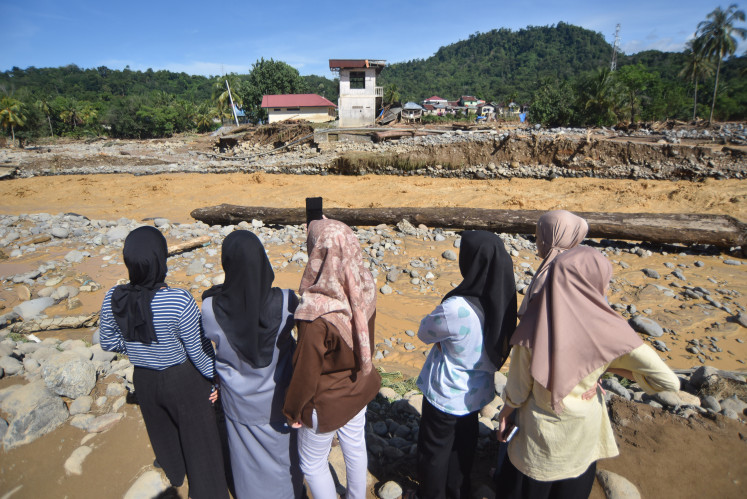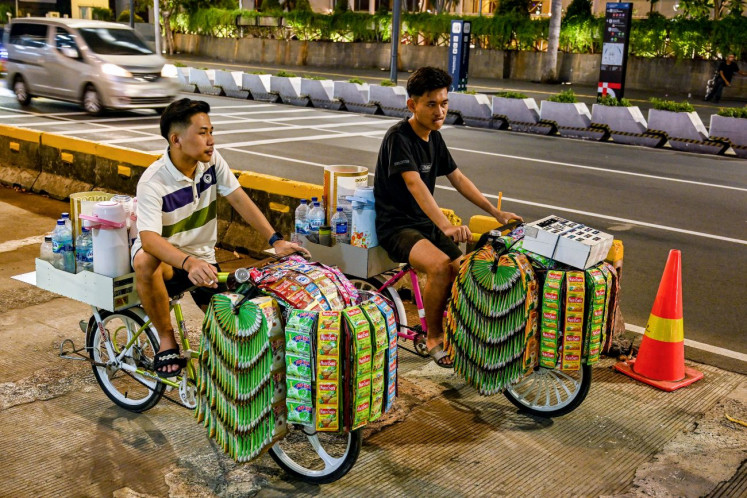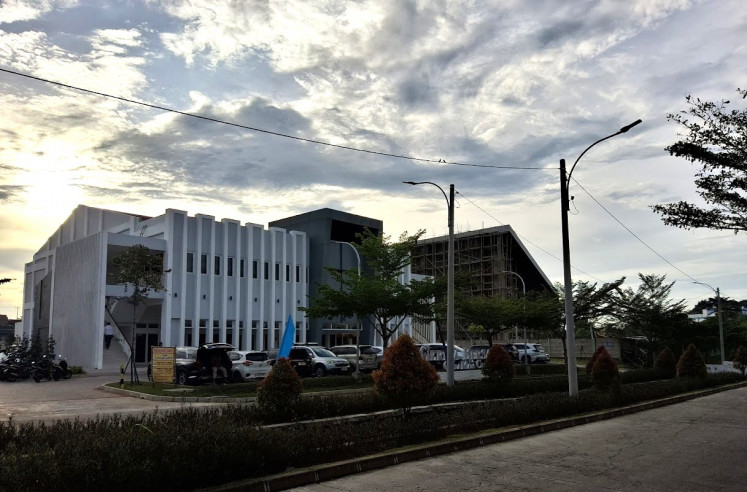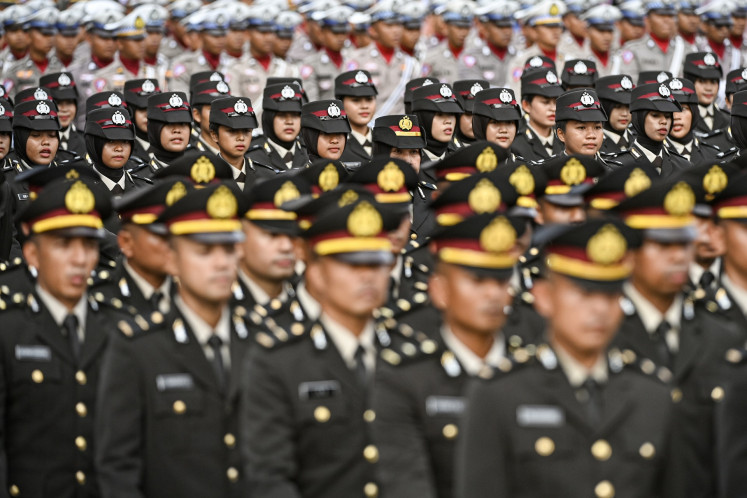Popular Reads
Top Results
Can't find what you're looking for?
View all search resultsPopular Reads
Top Results
Can't find what you're looking for?
View all search resultsSumatra is burning
The peak of the dry season next month is expected to bring even less rainfall and drier weather to several Sumatran provinces, including Riau, indicating a potential escalation of the forest fires.
Change text size
Gift Premium Articles
to Anyone
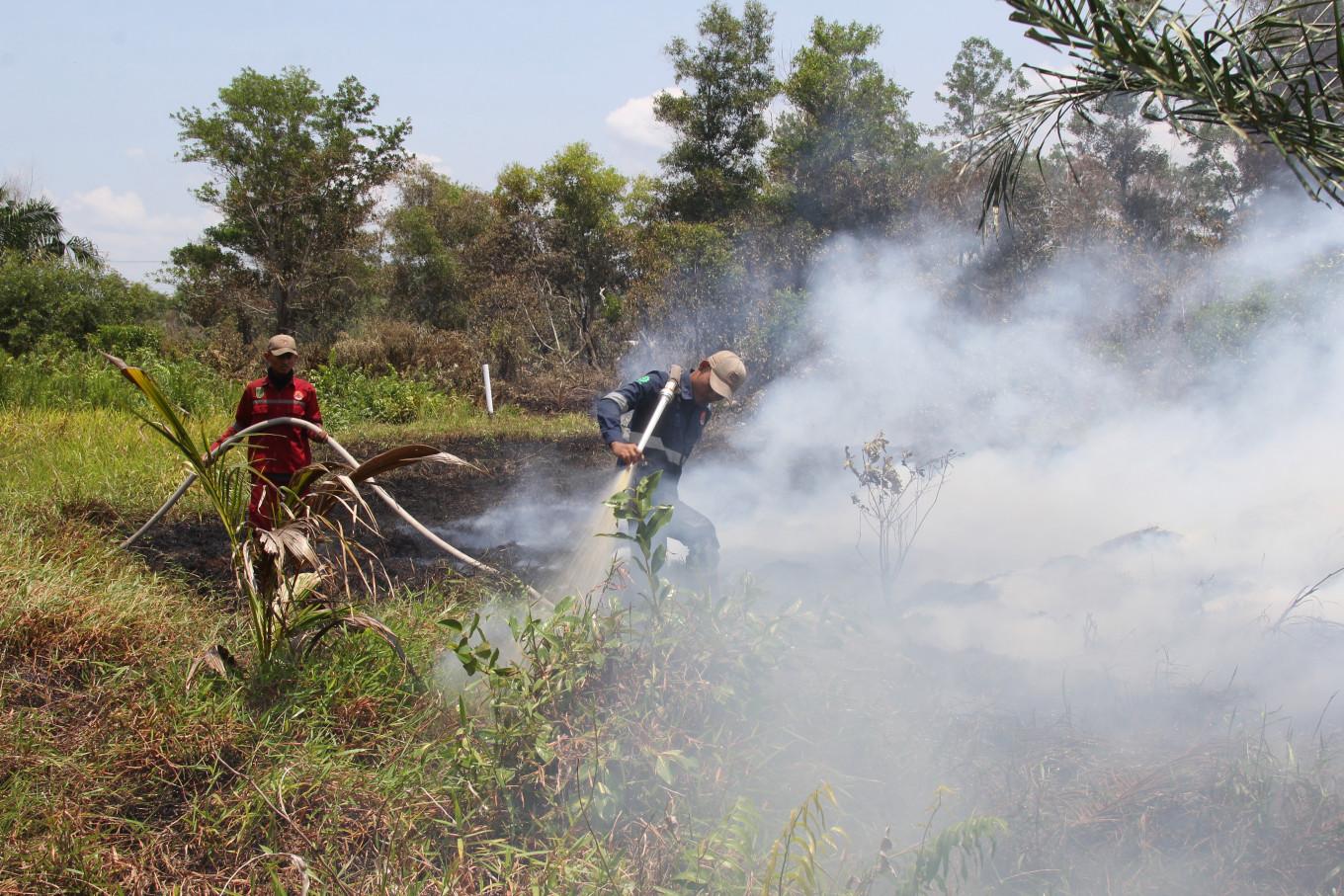 Workers of the Dumai Disaster Mitigation Agency (BPBD) strive to put out fires that engulf plantations on March 19, 2024, in Tanjung Sari village, East Dumai district, Dumai, Riau. The fires destroyed about 100 hectares of plantations and peatland in Dumai in four districts—East Dumai, West Dumai, Medang Kampai and Bukit Kapur. (Antara/Aswaddy Hamid)
Workers of the Dumai Disaster Mitigation Agency (BPBD) strive to put out fires that engulf plantations on March 19, 2024, in Tanjung Sari village, East Dumai district, Dumai, Riau. The fires destroyed about 100 hectares of plantations and peatland in Dumai in four districts—East Dumai, West Dumai, Medang Kampai and Bukit Kapur. (Antara/Aswaddy Hamid)
S
umatra is currently in the throes of a severe land fire crisis, with an alarming surge in incidents across several provinces on the island as the dry season intensifies. Riau has emerged as the epicenter of this environmental catastrophe, reporting fires across all 12 regencies and cities, engulfing approximately 1,000 hectares of vital forest and notoriously difficult-to-extinguish peatland.
The situation has prompted immediate emergency declarations. Riau, along with two of the 19 regencies and cities in neighboring West Sumatra, last week officially declared a state of emergency for forest fires. This dire situation is further exacerbated by the nature of peatland fires, which burn underground, smoldering for weeks or even months and posing persistent and hazardous challenges to containment efforts.
Adding to the regional crisis, North Sumatra has become the latest province to declare a state of emergency, with seven of its 33 regencies and cities affected. The National Disaster Mitigation Agency (BNPB) has reported at least 61 wildfires across North Sumatra since the beginning of the year, devastating over 4,400 hectares of land.
Of particular concern are recent fire incidents around Lake Toba, a UNESCO Global Geopark. These fires, some believed to be triggered by illegal slash-and-burn land clearing, jeopardize the government's efforts to preserve the site's prestigious status, which has been under a warning since 2023.
The Meteorology, Climatology and Geophysics Agency (BMKG) has issued a stark warning: The peak of the dry season next month is expected to bring even less rainfall and drier weather to several Sumatran provinces, including Riau, indicating a potential escalation of the crisis.
Authorities have taken some decisive actions. Riau Police have apprehended 51 suspects for alleged land clearing by burning, linked to at least 41 separate fires. Furthermore, the Environment Ministry has temporarily shut down four palm oil plantations and a mill in Riau after identifying hot spots within their concession areas.
The BNPB and local authorities are actively engaged in controlling and anticipating fires through water bombing, weather modification technology to induce rainfall and extensive land and aerial patrols.
However, these efforts face a significant hurdle: Persistent illegal land clearing practices. While the total area burned this year is still considerably less than the devastating 2015 wildfires that scorched over 2.6 million hectares in Sumatra and Kalimantan, impacting neighboring countries with dense haze, the current trajectory is a serious cause for concern.
To prevent the current situation from escalating into a full-blown, cross-border disaster, the central and local governments must implement a multi-pronged and robust mitigation strategy.
First, strengthen law enforcement and prosecution. This includes increasing aerial surveillance to detect illegal clearing early, implementing harsher penalties for arsonists and corporations found responsible for fires, and ensuring swift and transparent legal processes. The current arrests are a positive step, but consistent and widespread enforcement is crucial.
Second, enhance community engagement and education. Local communities, especially those living near forest and peatland areas, need to be educated about the dangers of slash-and-burn practices and encouraged to adopt sustainable land management techniques. Establishing community fire brigades and training them in early detection and basic firefighting can also be invaluable.
Third, prioritize peatland restoration and rewetting. This strategy involves blocking drainage canals to raise water tables, thereby preventing peat from drying out and becoming flammable. Reforestation with native, fire-resistant species on degraded peatland should also be a long-term strategy. Substantial funds and technical expertise are mandatory for these restoration efforts.
Finally, invest in advanced early warning systems and climate resilience. Utilizing satellite imagery and remote sensing technologies for early detection of hot spots, coupled with predictive modeling for fire risk based on weather patterns, can provide crucial lead time for intervention. The government should also consider long-term strategies for climate change adaptation, as prolonged dry seasons may become more frequent and intense.
The "real fire alarm" is ringing loud and clear across Sumatra. Without collective actions from both the government and communities, the specter of a widespread and devastating haze crisis looms large, threatening not only environmental integrity but also public health and economic stability across the island and beyond.


